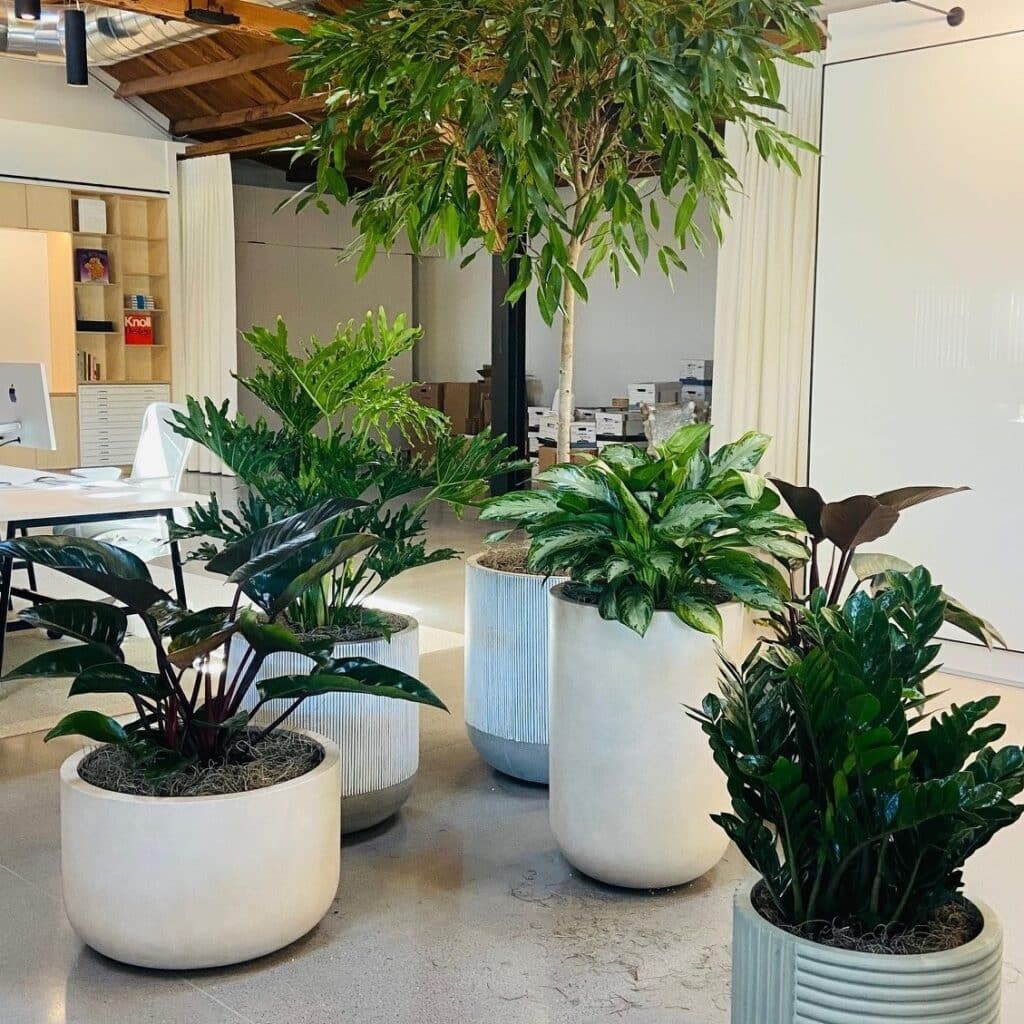Incorporating greenery into the workplace has long been recognized as a way to improve morale, productivity, and overall aesthetics. But the benefits extend beyond visual appeal. Scented plants introduce another powerful sensory element that can influence how employees feel and perform throughout the day.
When integrated with intention, aromatic greenery can create a soothing atmosphere, support cognitive function, and subtly shape the emotional tone of a space. As companies place increasing value on workplace wellness, selecting the right scented plants has become an important element in modern office design.
How Scent Influences Mood and Focus
Scent has a direct and measurable impact on the brain. Unlike other senses, smell bypasses the usual sensory relay stations and connects straight to the limbic system, the area responsible for emotion and memory. This means even subtle natural aromas can instantly affect mood, stress levels, and alertness.
In a work environment, certain fragrances are associated with:
- Stress reduction: Lavender and jasmine are known for their calming properties, which may reduce anxiety and mental fatigue.
- Increased alertness: Peppermint and rosemary can enhance focus, making them suitable for collaborative spaces or brainstorming zones.
- Positive emotional tone: Floral scents like geranium or gardenia have uplifting effects, which may contribute to a more pleasant and energetic workplace.
Unlike artificial air fresheners or diffusers, which often feel intrusive or overpowering, naturally scented plants emit consistent, gentle aromas that evolve with airflow, time of day, and touch. This creates a subtler sensory experience that supports well-being without distraction.
Top Scented Plants for Office Environments
Choosing scented plants for the workplace requires a balance between fragrance impact, maintenance needs, and the indoor growing environment. The right plant should fit the light conditions, not trigger allergies, and offer a scent that aligns with the purpose of the space.
Some of the most effective and office-friendly scented plants include:
- Lavender: Ideal for break rooms or quiet zones due to its stress-reducing qualities. Requires good light and minimal water.
- Mint (Peppermint or Spearmint): Invigorating scent, great for energizing work areas. It can be grown in small pots with regular trimming.
- Lemon balm: A citrusy, uplifting herb that doubles as an air purifier. Thrives in indirect light.
- Rosemary: Associated with memory and clarity, rosemary fits well in conference rooms or near desks.
- Orchids (certain varieties): Mild floral scent with elegant visuals, suitable for reception areas and executive suites.
When selecting plants, it is helpful to consider the right floral arrangements for different work settings to ensure both scent and style are optimized for the function of the space.
Supporting Biophilic Design with Scent
Biophilic design is more than adding plants, but also about reconnecting indoor environments with the calming patterns of nature. Incorporating scented plants enhances this philosophy by engaging a deeper range of senses and reinforcing the presence of natural elements within a built environment.
Key ways scented plants contribute to biophilic design include:
- Stimulating multisensory engagement: The sense of smell reinforces a sense of immersion in nature, not just a visual impression.
- Encouraging mindful breaks: Fragrant plant areas can serve as zones where employees are more likely to pause, breathe, and reset.
- Enhancing spatial memory: Specific scents tied to workspaces can improve focus and create positive associations with particular areas.
Companies exploring biophilic concepts can read more about biophilic design and employee well-being to understand how scent plays a natural role in fostering happier, healthier teams.
Practical Considerations for Incorporating Scented Plants
While the benefits of scented plants are clear, successful implementation requires careful planning. Not all plants are suitable for every workspace, and strong fragrances, if not managed thoughtfully, can overwhelm or trigger sensitivities in some individuals.
To use scented plants effectively:
- Choose low-allergen varieties: Avoid heavily pollinating plants or those with intense, cloying smells.
- Use moderation: Space plants out strategically to create a gentle aromatic presence, not an overpowering environment.
- Rotate seasonally: Introduce different scents throughout the year to reflect seasonal changes and avoid scent fatigue.
- Maintain regularly: Healthy plants produce consistent fragrance. Prune, water, and re-pot as needed to maintain vitality.
- Assign plants to zones: Use calming scents in lounges or quiet rooms and energizing aromas in collaborative or creative areas.
This thoughtful approach ensures that scent enhances the workspace without becoming a distraction or discomfort.
The Role of Professional Plant Services
Although scented plants are highly effective in transforming the workplace atmosphere, the benefits are maximized when they’re installed and maintained by professionals. Selection alone is only one part of the equation. Experts in workplace greenery understand spatial design, plant behavior, and environmental needs that most employees or office managers may overlook.
Professional services can:
- Evaluate the lighting, humidity, and airflow of each space
- Recommend plants based on scent strength, care needs, and design goals
- Provide ongoing care to ensure plants stay vibrant and fragrant
- Refresh or rotate arrangements to maintain long-term sensory engagement
Working with experts ensures that your investment in a healthier, more pleasant workplace atmosphere pays off in both appearance and performance.
Elevate Atmosphere with Scented Greenery
The right plants do more than decorate; they transform. If you’re ready to bring natural fragrance into your workplace through expertly chosen and maintained greenery, reach out to The Wright Gardner for tailored solutions that support employee wellness and elevate every space.

